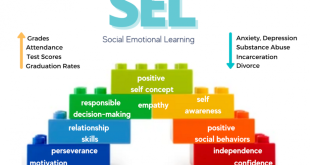The transition from high school to higher education is a critical juncture in a student’s life. Known as “The High School Handoff,” this period involves not only academic changes but also significant shifts in social, emotional, and personal development. Understanding this transition can help students, parents, and educators facilitate a smoother move into college or vocational training. Understanding the Transition
Understanding the Transition
1. Academic Readiness
- Curriculum Differences: High school typically focuses on foundational knowledge, while higher education emphasizes critical thinking, analytical skills, and independent learning. Students must adapt to a more rigorous academic environment.
- Study Skills: Effective study habits become essential. Students should be encouraged to develop time management skills, self-discipline, and the ability to seek help when needed.
2. Social Adjustments
- New Social Dynamics: College introduces students to diverse groups of people, which can be both exciting and overwhelming. Building new friendships and networks is vital for emotional support.
- Increased Independence: Students often experience greater freedom and responsibility, requiring them to make decisions about their time, finances, and lifestyle.
3. Emotional Challenges
- Anxiety and Stress: The pressure to succeed and the fear of failure can lead to heightened anxiety. Students should be equipped with coping strategies and resources for mental health support.
- Identity Exploration: This period is often marked by exploration of personal identity and values, which can lead to both growth and confusion.
Strategies for a Smooth Handoff
1. Preparation in High School
- College Counseling: Schools should provide robust college counseling services to guide students in selecting institutions, understanding application processes, and exploring financial aid options.
- Advanced Coursework: Encouraging students to take advanced placement (AP) or dual-enrollment courses can better prepare them for the academic demands of college.
2. Parental Support
- Open Communication: Parents should maintain open lines of communication with their children, discussing expectations, concerns, and aspirations.
- Encouraging Independence: Gradually allowing students to make their own decisions can foster confidence and self-reliance.
3. Campus Resources
- Orientation Programs: Colleges should offer comprehensive orientation programs that familiarize new students with campus resources, academic expectations, and support services.
- Mentorship Opportunities: Pairing incoming students with mentors or peer advisors can provide guidance and create a sense of belonging.
 Conclusion
Conclusion
The High School Handoff is a pivotal moment that requires careful consideration and support from all stakeholders involved—students, parents, educators, and institutions. By addressing the academic, social, and emotional aspects of this transition, we can help students navigate the challenges of moving from high school to higher education successfully. Ultimately, a well-managed transition not only enhances individual student success but also contributes to a positive educational environment overall.


